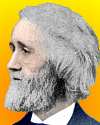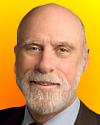
Born 23 Jun 1943. quotes
American computer scientist who has been called one of the fathers of the internet. He co-designed the architecture of the internet's operation with TCP/IP protocols. Cerf also pioneered in establishing the first commercial e-mail service, while vice president of MCI Digital Information Services (1982-1986). He joined Google as a vice-president in 2005.«
American computer scientist who has been called one of the fathers of the internet. He co-designed the architecture of the internet's operation with TCP/IP protocols. Cerf also pioneered in establishing the first commercial e-mail service, while vice president of MCI Digital Information Services (1982-1986). He joined Google as a vice-president in 2005.«
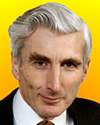
Born 23 Jun 1942. quotes
Martin Rees, Baron Rees of Ludlow is an English cosmologist and astrophysicist who became Astronomer Royal in 1995. He studied the distribution of quasars, which he proposed drew their power from huge black holes. In high energy physics, he did research on gamma ray bursts, galactic nuclei and black hole formation. He looked for gravitational waves. Studying cosmic structure, he was especially interested in the early generation of stars and galaxies that formed at high redshifts at the end of the cosmic “dark age.” Rees published over 500 research papers. He also wrote eight books, numerous magazine and newspaper articles on scientific subjects, most for general readership. He received the title of Baron Rees of Ludlow in 2005, in which year he became president of the Royal Society (2005-10).« more
Martin Rees, Baron Rees of Ludlow is an English cosmologist and astrophysicist who became Astronomer Royal in 1995. He studied the distribution of quasars, which he proposed drew their power from huge black holes. In high energy physics, he did research on gamma ray bursts, galactic nuclei and black hole formation. He looked for gravitational waves. Studying cosmic structure, he was especially interested in the early generation of stars and galaxies that formed at high redshifts at the end of the cosmic “dark age.” Rees published over 500 research papers. He also wrote eight books, numerous magazine and newspaper articles on scientific subjects, most for general readership. He received the title of Baron Rees of Ludlow in 2005, in which year he became president of the Royal Society (2005-10).« more
Our Final Hour: A Scientist's Warning, by Martin Rees. - book suggestion.
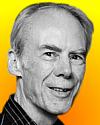
Born 23 Jun 1937; died 24 Jan 2006 at age 68.
English geologist and paleoclimatologist who helped identify carbon dioxide as a greenhouse gas. He studied the ancient climate changes of the Quaternary period, the last 1.8 million years, during which there were periods building up massive ice sheets and mountain ice caps alternating with warm weather when the ice receded. His data showed Ice Ages occurred roughly every 100,000 years, by analysing an ice sheet in Russia and deep-sea fossil shells. He demonstrated that Ice Ages were linked to decreases in atmospheric carbon dioxide. Conversely, he warned, the present excessive emissions of that gas into the atmosphere can cause global warming. He was a distant relative of Sir Ernest Shackleton, the Arctic explorer.«
English geologist and paleoclimatologist who helped identify carbon dioxide as a greenhouse gas. He studied the ancient climate changes of the Quaternary period, the last 1.8 million years, during which there were periods building up massive ice sheets and mountain ice caps alternating with warm weather when the ice receded. His data showed Ice Ages occurred roughly every 100,000 years, by analysing an ice sheet in Russia and deep-sea fossil shells. He demonstrated that Ice Ages were linked to decreases in atmospheric carbon dioxide. Conversely, he warned, the present excessive emissions of that gas into the atmosphere can cause global warming. He was a distant relative of Sir Ernest Shackleton, the Arctic explorer.«
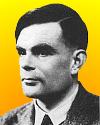
Born 23 Jun 1912; died 7 Jun 1954 at age 41. quotes
Alan Mathison Turing was an English mathematician and logician who pioneered in the field of computer theory and who contributed important logical analyses of computer processes. He made major contributions to mathematics, cryptanalysis, logic, philosophy, and biology and to the new areas later named computer science, cognitive science, artificial intelligence, and artificial life.
Alan Mathison Turing was an English mathematician and logician who pioneered in the field of computer theory and who contributed important logical analyses of computer processes. He made major contributions to mathematics, cryptanalysis, logic, philosophy, and biology and to the new areas later named computer science, cognitive science, artificial intelligence, and artificial life.
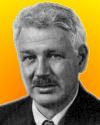
Born 23 Jun 1904; died 6 Jun 1981 at age 76.
Carleton Stevens Coon was an American anthropologist who made notable contributions to cultural and physical anthropology and archaeology, with controversial studies of the origins and contemporary variations of human racial types. His studies ranged from prehistoric communities to modern tribal societies in the Middle East, Patagonia, and the hill country of India. He applied Darwinian adaptation to explain the physical characteristics of race in The Origin of Races (1962), based primarily on human fossil material. In his last book (1982), he was able to include biochemical data to suggest explanations for the physical variations in man. In the 1950's he was a regular panelist on a TV show, in which experts identified museum artifacts.
Carleton Stevens Coon was an American anthropologist who made notable contributions to cultural and physical anthropology and archaeology, with controversial studies of the origins and contemporary variations of human racial types. His studies ranged from prehistoric communities to modern tribal societies in the Middle East, Patagonia, and the hill country of India. He applied Darwinian adaptation to explain the physical characteristics of race in The Origin of Races (1962), based primarily on human fossil material. In his last book (1982), he was able to include biochemical data to suggest explanations for the physical variations in man. In the 1950's he was a regular panelist on a TV show, in which experts identified museum artifacts.
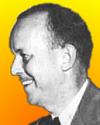
Born 23 Jun 1902; died 9 Mar 1962 at age 59.
American computer designer who promoted the first commercially available digital computer, the Univac. As a Yale professor he had written a paper on the mathematical basis for cryptanalysis techniques. During WW II he was called to the Navy and placed in command of the OP-20-G automated machines "Research Section" for message decryption. After the war, he was a co-founder of Engineering Research Associates, a private company to work on electronic digital circuit technology for the Navy on a contract basis, with former Navy researchers. ERA delivered its first Atlas computer to the National Security Agency in Dec 1950. As vice president for research, Engstrom took the initiative to make a commercial version, renamed Univac.
American computer designer who promoted the first commercially available digital computer, the Univac. As a Yale professor he had written a paper on the mathematical basis for cryptanalysis techniques. During WW II he was called to the Navy and placed in command of the OP-20-G automated machines "Research Section" for message decryption. After the war, he was a co-founder of Engineering Research Associates, a private company to work on electronic digital circuit technology for the Navy on a contract basis, with former Navy researchers. ERA delivered its first Atlas computer to the National Security Agency in Dec 1950. As vice president for research, Engstrom took the initiative to make a commercial version, renamed Univac.
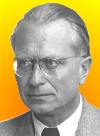
Born 23 Jun 1901; died 13 May 1983 at age 81.
Otto (Hermann Leopold) Heckmann was a German astronomer noted for measuring stellar positions and his studies of relativity and cosmology. He also made notable contributions to statistical mechanics. In 1931, He proved that, under the assumptions that matter is homogeneously distributed throughout the universe and is isotropic (having identical properties in every direction), the theory of general relativity could result in an open, or Euclidean, universe as readily as a closed one. Heckmann organized an international program to photograph and chart the positions of the stars in the Northern Hemisphere, which led to the publication in 1975 of the third German Astronomical Society catalog, Astronomische Gesellschaft Katalog (AGK3).
Otto (Hermann Leopold) Heckmann was a German astronomer noted for measuring stellar positions and his studies of relativity and cosmology. He also made notable contributions to statistical mechanics. In 1931, He proved that, under the assumptions that matter is homogeneously distributed throughout the universe and is isotropic (having identical properties in every direction), the theory of general relativity could result in an open, or Euclidean, universe as readily as a closed one. Heckmann organized an international program to photograph and chart the positions of the stars in the Northern Hemisphere, which led to the publication in 1975 of the third German Astronomical Society catalog, Astronomische Gesellschaft Katalog (AGK3).
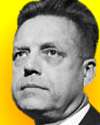
Born 23 Jun 1894; died 25 Aug 1956 at age 62. quotes
Alfred Charles Kinsey was an American zoologist and sexologist who studied and wrote about human sexual behaviour. His best-selling books, The Sexual Behavior of the Human Male (1948) and Sexual Behavior in the Human Female (1953), made him a household name. His interest in nature began in 7th grade, when he began a botanical collection, and it is said that by age 16 had written, 'What Do Birds Do When It Rains,' (though no known copy remains). He established his career with 17 years of conventional research in entomology, and became an expert on the American gall wasp. In 1938, while preparing a non-credit course on marriage, he found information lacking on sex and marriage. Thus began a study using questionnaires and interviews to publish scientifically insightful results.«
Alfred Charles Kinsey was an American zoologist and sexologist who studied and wrote about human sexual behaviour. His best-selling books, The Sexual Behavior of the Human Male (1948) and Sexual Behavior in the Human Female (1953), made him a household name. His interest in nature began in 7th grade, when he began a botanical collection, and it is said that by age 16 had written, 'What Do Birds Do When It Rains,' (though no known copy remains). He established his career with 17 years of conventional research in entomology, and became an expert on the American gall wasp. In 1938, while preparing a non-credit course on marriage, he found information lacking on sex and marriage. Thus began a study using questionnaires and interviews to publish scientifically insightful results.«
Alfred C. Kinsey: A Life, by James H. Jones. - book suggestion.
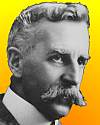
Born 23 Jun 1860; died 14 Jul 1929 at age 69.
English biologist and anthropologist, the first trained and experienced scientist to enter the field of Australian anthropology. He made several expeditions to central and northern Australia (1894-1926), making representations on Aboriginal welfare to the Australian parliament in 1913. In 1912 he collected more than 200 bark paintings which he presented to the National Museum of Victoria, together with his ethnographic collection, in 1917. Spencer's interpretation of Aranda society came under criticism at the time and his paternalistic conclusions are unacceptable to later scholars. His writings and pictorial records constitute, however, a unique and valuable archive of Aboriginal society. He returned to England in 1927.
English biologist and anthropologist, the first trained and experienced scientist to enter the field of Australian anthropology. He made several expeditions to central and northern Australia (1894-1926), making representations on Aboriginal welfare to the Australian parliament in 1913. In 1912 he collected more than 200 bark paintings which he presented to the National Museum of Victoria, together with his ethnographic collection, in 1917. Spencer's interpretation of Aranda society came under criticism at the time and his paternalistic conclusions are unacceptable to later scholars. His writings and pictorial records constitute, however, a unique and valuable archive of Aboriginal society. He returned to England in 1927.
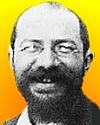
Born 23 Jun 1859; died 25 Aug 1940 at age 81. quotes
French industrialist who, with his older brother André, founded Michelin Tyre Co. in 1888, expanding the rubber company established (1832) by their grandfather, Aristide Barbier, and Nicolas Edouard Daubree. The Michelins made the first pneumatic tyres that could be easily removed for repair, for bicycles (1891) and for automobiles (1895). They introduced tire tread patterns, low-pressure balloon tires, and steel-cord tires. The company created a tourist guide organization which placed milestones on French roads and established a standard road map service for most of Europe. André created Michelin guides to promote tourism by car. The first Red Guide, with restaurant ratings, was published in 1900.« more
French industrialist who, with his older brother André, founded Michelin Tyre Co. in 1888, expanding the rubber company established (1832) by their grandfather, Aristide Barbier, and Nicolas Edouard Daubree. The Michelins made the first pneumatic tyres that could be easily removed for repair, for bicycles (1891) and for automobiles (1895). They introduced tire tread patterns, low-pressure balloon tires, and steel-cord tires. The company created a tourist guide organization which placed milestones on French roads and established a standard road map service for most of Europe. André created Michelin guides to promote tourism by car. The first Red Guide, with restaurant ratings, was published in 1900.« more
The Michelin Men: Driving an Empire, by Herbert Lottman. - book suggestion.
Born 23 Jun 1846; died 30 Jun 1916 at age 70.
French Egyptologist and director general of excavations and antiquities for the Egyptian government, who was responsible for locating a collective royal tomb of prime historic importance.
French Egyptologist and director general of excavations and antiquities for the Egyptian government, who was responsible for locating a collective royal tomb of prime historic importance.
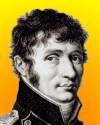
Born 23 Jun 1775; died 24 Feb 1812 at age 36. quotes
French physicist who discovered that light, when reflected, becomes partially plane polarized; i.e., its rays vibrate in the same plane. He served in Napoleon's corps of engineers, fought in Egypt, and contracted the plague during Napoleon's aborted campaign in Palestine. Posted to Europe after 1801, he began research in optics. In 1808, he discovered that light rays may be polarized by reflection, while looking through a crystal of Iceland spar at the windows of a building reflecting the rays of the Sun. He noticed that on rotating the crystal the light was extinguished in certain positions. Applying corpuscular theory, he argued that light particles have sides or poles and coined the word "polarization."[EB and Chambers Dict. of Sci. give date of birth 23 Jun 1775. For death they give 23 Feb 1812 and 1812 respectively. DSB gives dates 23 Jul 1775 - 24 Feb 1812.]
French physicist who discovered that light, when reflected, becomes partially plane polarized; i.e., its rays vibrate in the same plane. He served in Napoleon's corps of engineers, fought in Egypt, and contracted the plague during Napoleon's aborted campaign in Palestine. Posted to Europe after 1801, he began research in optics. In 1808, he discovered that light rays may be polarized by reflection, while looking through a crystal of Iceland spar at the windows of a building reflecting the rays of the Sun. He noticed that on rotating the crystal the light was extinguished in certain positions. Applying corpuscular theory, he argued that light particles have sides or poles and coined the word "polarization."[EB and Chambers Dict. of Sci. give date of birth 23 Jun 1775. For death they give 23 Feb 1812 and 1812 respectively. DSB gives dates 23 Jul 1775 - 24 Feb 1812.]
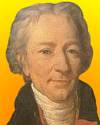
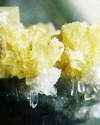
(also called Déodat De Gratet De Dolomieu) was a French geologist and mineralogist after whom the mineral dolomite was named. A member of the order of Malta since infancy, at age 19 he was sentenced to death for killing a brother knight in a duel, but was pardoned. Following a study of the Alps (1789–90), he described dolomite (1791) The rock, which gave its name to the Dolomite Mountains where it was found, has crystals of calcium and magnesium carbonate, generally white or pinks. As a member of Napoleon's expedition to Egypt (1798), Dolomieu was captured on the way home and imprisoned at Messina. During his imprisonment he wrote his main treatise on minerals (1801), on the margins of a Bible.[Image right: dolomite][DSB gives date of death as 28 (16? 29?) Nov 1801. EB gives 26 Nov 1801.]
Born 23 Jun 1668; died 23 Jan 1744 at age 75. quotes
Italian philosopher of cultural history and law, who is recognized today as a forerunner of cultural anthropology, or ethnology. He attempted, especially in his major work, the Scienza nuova (1725; "New Science"), to bring about the convergence of history, from the one side, and the more systematic social sciences, from the other, so that their interpenetration could form a single science of humanity.
Italian philosopher of cultural history and law, who is recognized today as a forerunner of cultural anthropology, or ethnology. He attempted, especially in his major work, the Scienza nuova (1725; "New Science"), to bring about the convergence of history, from the one side, and the more systematic social sciences, from the other, so that their interpenetration could form a single science of humanity.
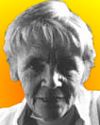
Died 23 Jun 2002 at age 95 (born 4 Oct 1906). quotes
English epidemiologist who demonstrates the connection between foetal X-rays and childhood leukemia. Her research demonstrated greater danger from X-rays and nuclear radiation than was at the time accepted by nuclear and health physics establishments. She insisted that exposure to low-level radiation caused adverse effects greater than accepted was resisted by officials of the British and U.S. governments. Starting in WW II, she investigated the health effects of exposure to TNT in ammunitions factories, of carbon tetrachloride, and a prevalence of tuberculosis among shoe industry workers. After a visit to the U.S. in 1974, she consulted on a major investigation of the health of workers in the nuclear industry there.«
English epidemiologist who demonstrates the connection between foetal X-rays and childhood leukemia. Her research demonstrated greater danger from X-rays and nuclear radiation than was at the time accepted by nuclear and health physics establishments. She insisted that exposure to low-level radiation caused adverse effects greater than accepted was resisted by officials of the British and U.S. governments. Starting in WW II, she investigated the health effects of exposure to TNT in ammunitions factories, of carbon tetrachloride, and a prevalence of tuberculosis among shoe industry workers. After a visit to the U.S. in 1974, she consulted on a major investigation of the health of workers in the nuclear industry there.«
The Woman Who Knew Too Much: Alice Stewart and the Secrets of Radiation, by Gayle Jacoba Greene. - book suggestion.
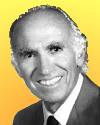
Died 23 Jun 1995 at age 80 (born 28 Oct 1914). quotes
American Jewish physician and medical researcher, born in New York City, who developed the first safe and effective vaccine for poliomyelitis. His early work (1946) was research on the influenza virus. In 1963, he became director of the Salk Institute for Biological Studies at the Univ. of California, San Diego. He developed a vaccine against poliomyelitis by cultivating three strains of the virus separately in monkey tissue. The virus was separated from the tissue, stored for a week, killed with formaldehyde, then tested to make certain that it is dead. A series of three or four injections with the killed virus vaccine was required to confer immunity.
American Jewish physician and medical researcher, born in New York City, who developed the first safe and effective vaccine for poliomyelitis. His early work (1946) was research on the influenza virus. In 1963, he became director of the Salk Institute for Biological Studies at the Univ. of California, San Diego. He developed a vaccine against poliomyelitis by cultivating three strains of the virus separately in monkey tissue. The virus was separated from the tissue, stored for a week, killed with formaldehyde, then tested to make certain that it is dead. A series of three or four injections with the killed virus vaccine was required to confer immunity.
Jonas Salk: Beyond the Microscope, by Victoria Sherrow. - book suggestion.
Died 23 Jun 1993 at age 79 (born 4 Apr 1914).
Czech astronomer who directed an international project, financed by the U.S. Air Force, to photograph and map the entire surface of the Moon by using the refracting telescope at the Pic du Midi Observatory in southern France.
Czech astronomer who directed an international project, financed by the U.S. Air Force, to photograph and map the entire surface of the Moon by using the refracting telescope at the Pic du Midi Observatory in southern France.
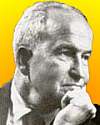
Died 23 Jun 1988 at age 95 (born 13 May 1893).
Henry Alexander Murray was an American psychologist who developed a theory of human personality based on an individual's inborn needs and his relationship with the physical and social environment. In 1938 he was asked by the U.S. Government to put together a psychological profile on Adolph Hitler. During WW II, he served the U.S. Army by helping the forerunner of the CIA assess the psychological fitness of its agents. Murray's main interest included personology, Melville and the welfare of the world in the atomic age. In his Basic Concepts for a Psychology of Personality, (Journal of Psychology, 15, 1936), he described personology as “the disciplined study of human nature.”
Henry Alexander Murray was an American psychologist who developed a theory of human personality based on an individual's inborn needs and his relationship with the physical and social environment. In 1938 he was asked by the U.S. Government to put together a psychological profile on Adolph Hitler. During WW II, he served the U.S. Army by helping the forerunner of the CIA assess the psychological fitness of its agents. Murray's main interest included personology, Melville and the welfare of the world in the atomic age. In his Basic Concepts for a Psychology of Personality, (Journal of Psychology, 15, 1936), he described personology as “the disciplined study of human nature.”
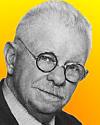
Died 23 Jun 1945 at age 78 (born 4 Sep 1866).
U.S. inventor whose submarine, the Argonaut, was the first to make extensive open-sea operations and to salvage cargo from sunken vessels. His career began in 1883 in his father's foundry and machine shop. At first, Lake invented equipment for surface vessels, including a steering gear, dredge and other improvement for fishing and oyster ships sailing in the Chesapeake and Delaware bays. In 1884, he built the Argonaut Jr., his first trial submersible. He was issued U.S. patent 581,213 for his submarine (20 Apr 1897). From 1886 he built the Argonaut, with a 30-hp gasoline engine, which he publicly demonstrated on 16 Dec 1897. After refitting, over several years, it sailed 2,000 miles and salvaged cargo from 30 wrecks.«
U.S. inventor whose submarine, the Argonaut, was the first to make extensive open-sea operations and to salvage cargo from sunken vessels. His career began in 1883 in his father's foundry and machine shop. At first, Lake invented equipment for surface vessels, including a steering gear, dredge and other improvement for fishing and oyster ships sailing in the Chesapeake and Delaware bays. In 1884, he built the Argonaut Jr., his first trial submersible. He was issued U.S. patent 581,213 for his submarine (20 Apr 1897). From 1886 he built the Argonaut, with a 30-hp gasoline engine, which he publicly demonstrated on 16 Dec 1897. After refitting, over several years, it sailed 2,000 miles and salvaged cargo from 30 wrecks.«
Argonaut: The Submarine Legacy of Simon Lake, by John J. Poluhowich. - book suggestion.
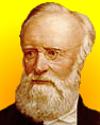
Died 23 Jun 1895 at age 78 (born 24 Nov 1816). quotes
English naturalist who founded modern paleobotany, the study of fossil plants found in sediments and rocks. His father was a geologist and a friend of William Smith, the father of English geology. At age 18, he presented his first paper (1834) on organic remains in the Lias of Yorkshire. The next year, he was appointed curator of the Manchester Natural History Museum while pursuing medical training. He contributed to Lindley and Hutton's Fossil Flora of Great Britain. He practiced medicine from 1842, but still made time for significant scientific work. From 1845 to 1857, he published a notable series of papers on the development of scales and teeth of fish. By his later years, his body of work investigating the structure of fossil plants, especially those found in coal measures, made him an acknowledged master in the field.«
English naturalist who founded modern paleobotany, the study of fossil plants found in sediments and rocks. His father was a geologist and a friend of William Smith, the father of English geology. At age 18, he presented his first paper (1834) on organic remains in the Lias of Yorkshire. The next year, he was appointed curator of the Manchester Natural History Museum while pursuing medical training. He contributed to Lindley and Hutton's Fossil Flora of Great Britain. He practiced medicine from 1842, but still made time for significant scientific work. From 1845 to 1857, he published a notable series of papers on the development of scales and teeth of fish. By his later years, his body of work investigating the structure of fossil plants, especially those found in coal measures, made him an acknowledged master in the field.«
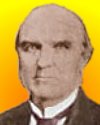
Died 23 Jun 1891 at age 62 (born 23 Mar 1829).
English astronomer who devised the magnitude scale of the brightness of stars (1850) now in use. He divided the classical scale in which a first magnitude star is one hundred times brighter than a sixth magnitude star using five integer steps. Each step represents a fifth-root of 100 (about 2.512) increase in brightness. The Sun's magnitude on this scale is -26.91, whereby negative numbers denote objects brighter than first magnitude. Sirius is magnitude -1.58, Aldebaran is 1 and the faintest star detected is 30. His interest in astronomy began in his youth; by age 18 he had calculated orbits for two comets. He discovered 8 asteroids, 21 new variable stars and compiled a massive star catalogue. In 1860 he moved to India for the remainder of his life's work.«
English astronomer who devised the magnitude scale of the brightness of stars (1850) now in use. He divided the classical scale in which a first magnitude star is one hundred times brighter than a sixth magnitude star using five integer steps. Each step represents a fifth-root of 100 (about 2.512) increase in brightness. The Sun's magnitude on this scale is -26.91, whereby negative numbers denote objects brighter than first magnitude. Sirius is magnitude -1.58, Aldebaran is 1 and the faintest star detected is 30. His interest in astronomy began in his youth; by age 18 he had calculated orbits for two comets. He discovered 8 asteroids, 21 new variable stars and compiled a massive star catalogue. In 1860 he moved to India for the remainder of his life's work.«
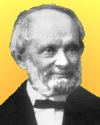
Died 23 Jun 1891 at age 86 (born 24 Oct 1804). quotes
German physicist who investigated terrestrial magnetism. For six years, from 1831, Weber worked in close collaboration with Carl Gauss. Weber developed sensitive magnetometers, an electromagnetic telegraph (1833) and other magnetic instruments during this time. His later work (1855) on the ratio between the electrodynamic and electrostatic units of charge proved extremely important and was crucial to James Clerk Maxwell in his electromagnetic theory of light. (Weber found the ratio was 3.1074 x 108 m/sec but failed to take any notice of the fact that this was close to the speed of light.) Weber's later years were devoted to work in electrodynamics and the electrical structure of matter. The magnetic unit, weber, is named after him.
German physicist who investigated terrestrial magnetism. For six years, from 1831, Weber worked in close collaboration with Carl Gauss. Weber developed sensitive magnetometers, an electromagnetic telegraph (1833) and other magnetic instruments during this time. His later work (1855) on the ratio between the electrodynamic and electrostatic units of charge proved extremely important and was crucial to James Clerk Maxwell in his electromagnetic theory of light. (Weber found the ratio was 3.1074 x 108 m/sec but failed to take any notice of the fact that this was close to the speed of light.) Weber's later years were devoted to work in electrodynamics and the electrical structure of matter. The magnetic unit, weber, is named after him.
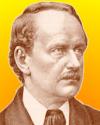
Died 23 Jun 1881 at age 77 (born 5 Apr 1804). quotes
German botanist who first formulated the theory that plants are composed of cells. Instead of plant classification, Schleiden studied plant growth and structure under the microscope. This led to his Contributions to Phytogenesis (1838), which stated that the various structures of the plant are composed of cells or their derivatives. He thus formulated the cell theory for plants, which was later eleborated and extended to animals by the German physiologist Theodor Schwann. Schleiden recognized the significance of the cell nucleus and sensed its importance in cell division, although he thought (wrongly) that new cells were produced by budding from its surface. He was one of the first German biologists to accept Darwinism.
German botanist who first formulated the theory that plants are composed of cells. Instead of plant classification, Schleiden studied plant growth and structure under the microscope. This led to his Contributions to Phytogenesis (1838), which stated that the various structures of the plant are composed of cells or their derivatives. He thus formulated the cell theory for plants, which was later eleborated and extended to animals by the German physiologist Theodor Schwann. Schleiden recognized the significance of the cell nucleus and sensed its importance in cell division, although he thought (wrongly) that new cells were produced by budding from its surface. He was one of the first German biologists to accept Darwinism.
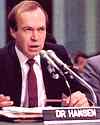
In 1988, Dr James E. Hansen testified to a Congressional committee about the previously noted global warming trend. The cause, he said, was known with 99% certainty, to be the buildup of carbon dioxide and other artificial gases in the atmosphere trapping solar radiation. He identified the burning of fossil fuels as a major source of the problem. The impact was not a natural variation, but a long term effect that could last for centuries. “It is time to stop waffling so much and say that the evidence is pretty strong that the greenhouse effect is here.” Hansen spoke to the Senate Energy and Natural Resources Committee as director of NASA's Institute for Space Studies in Manhattan. Other scientists also testified remedies were needed immediately.«
In 1982, a record low temperature of -117 ºF (-82.8 ºC). was recorded at the South Pole.
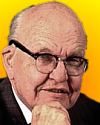
Kilby
In 1964, a U.S. patent was issued to Jack S. Kilby for his invention of “Miniaturized Electronic Circuits” now known as integrated circuits (No. 3,138,743, filed 6 Feb 1959), which he assigned to his employer, Texas Instruments, where he worked. With it, he created a new way of reducing the space taken up by an electronic circuit by which “all components of an entire electronic circuit are integrated into the body of semiconductor material,” for which he used germanium. Geoffrey W.A. Dummer also had the concept years earlier, but never completed a working device. A few months after Kilby's demonstration in 1964, an IC device in an improved form was independently invented by Robert Noyce at another company. Eventually, the two companies agreed to cross-license their patents.«
In 1964, Arthur Melin obtained a patent for the hula-hoop. An Australian visiting California told Melin that in his country, children twirled bamboo hoops around their waists in gym class. Melin, who started toy giant Wham-O in 1948 with his boyhood friend Richard Knerr with slingshots and named their mail-order company after the sound a slingshot made when its projectile struck a target. They branched into other sporting goods, including pellet guns, crossbows and daggers. They added toys in 1955, when building inspector Fred Morrison sold them a plastic flying disc he had developed after watching Yale University students toss pie tins. Wham-O began selling the disc they called the Pluto Platter two years later before modifying it and renaming it the Frisbee.
In 1961, an X-15 jet airplane set a speed record, traveling over 3,000 mph at Edwards Air Force Base, California.*
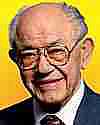
In 1953, Frank J. Zamboni was issued a U.S. patent for his ice resurfacer (No. 2,642,679).
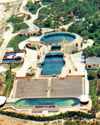
Aerial view
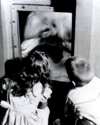
Viewing dolphin
Marineland: Images of America, by Cheryl Messinger and Terran McGinnis. - book suggestion.
In 1931, aviators Wiley Post and Harold Gatty took off from New York on the first flight around the world in a single-engine plane.
In 1928, in Germany, a rocket-powered auto built by Opel was wrecked in a test after reaching a speed of 156 mph.*

(USPTO)
In 1868, Christopher Latham Sholes, Carlos Glidden and Samuel W. Soule of Milwaukee, Wisconsin received a patent for an invention he called a “Type-Writer” (U.S. No. 79,265). It only had capital letters and fit in a box about 2 feet square and 6" high. The typists didn't know if they were making errors because the paper could not be seen as it was being typed; it was inside the machine. It was described as an improvement on their earlier type-writing machine, which previous patent application they had filed 11 Oct 1867. The new features were “a better way of working the type-bars, of holding paper on the carriage, of holding, applying, and moving the inking-ribbon, a self-adjusting platen, and a rest or cushion for the type-bars to follow.”
The Typewriter: An Illustrated History, by Typewriter Topics. - book suggestion.
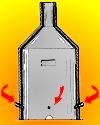
(USPTO)
In 1857, a U.S. patent was issued to William Kelly for Manufacturing of Iron and Steel (No. 17628). Although he had been experimenting with the steel-making process for a few years, he had not patented it until he heard that Henry Bessemer had been granted a patent on a like process. Kelly had not filed first, but he was able to convince the patent office that he was the first to invent the air-blast method of forming steel from iron in a cupula. Kelly thus held rights of priority for his patent. However, Bessemer had important additional steps worked out to mass-produce steel. Bessemer was a businessman and industrialist who made the Bessemer process profitable, but Kelly still benefitted from his share, though smaller, of the vast profits.«[Image: Kelly's converter illustrated from patent diagram, Red arrows indicate the tuyeres through which an air blast is introduced.] more
William Kelly: a True History of the So-Called Bessemer Process, by John Newton Boucher. - book suggestion.
In 1784, in Baltimore, America's first balloonist, was a teenager,13-year-old Edward Warren, who soloed in a 35-foot diameter hot-air balloon held in place from the ground with a tether. The balloon was built by Baltimore attorney, Peter Carnes. Warren volunteered for the flight after the craft was unable to lift its builder.
In 1775, the first American-made book was advertised in Philadelphia, Penn. Titled Impenetrable Secret, the book was printed and sold by Story and Humphreys. Their advertisement in the Pennsylvania Mercury announced it was “Just published and printed with types, paper and ink manufactured in this Province.” Sadly, no copy of the book has survived. Earlier in the same year, on 7 Apr, the first issue of the paper appeared with a similar proud announcement that it was printed with type of American manufacture. Previously, colonial printers’ type was made from imported matrices. After the nation's breakway from Britain, the American printing industry became increasingly self-sufficient.«


